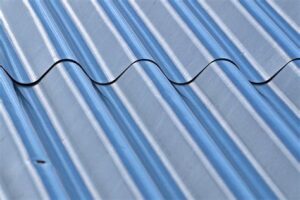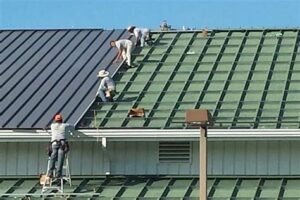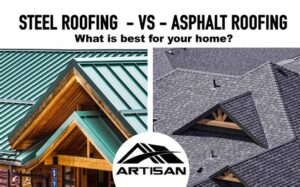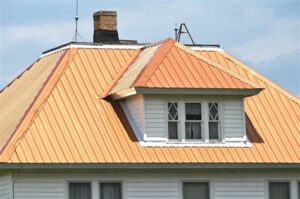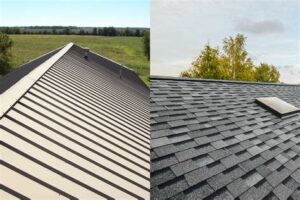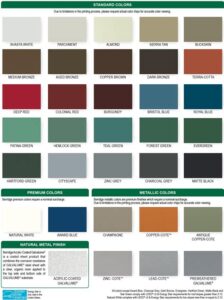When it comes to maintaining the integrity of your metal roof, the often-overlooked metal roof closure strips play a crucial role. These strips ensure a tight seal, protecting your home from unwelcome elements and enhancing longevity. In this comprehensive guide, we will explore everything you need to know about metal roof closure strips maintenance. From understanding their vital importance to the essential tools you’ll need for upkeep, we’ve got you covered. We will also provide a step-by-step guide for inspecting these strips, offer practical advice on repairing any damages, and share regular maintenance tips to ensure they perform optimally for years to come. Whether you’re a seasoned DIY enthusiast or a first-time homeowner, this article will equip you with the knowledge necessary to keep your metal roof in top condition.
Understanding Metal Roof Closure Strips and Their Importance
Metal roof closure strips play a vital role in maintaining the integrity and efficiency of a metal roofing system. These strips are designed to fill the gaps at the edges of metal panels, particularly at the ridges, eaves, and gable ends, ensuring that your roof is securely sealed against the elements.
One of the primary functions of closure strips is to prevent the intrusion of wind, rain, and debris, which can lead to potential damage over time. By effectively sealing these gaps, closure strips help to enhance the durability of the metal roofing system, ultimately prolonging its lifespan.
Moreover, closure strips contribute to energy efficiency. By minimizing air leakage and controlling airflow, these strips aid in regulating indoor temperatures, which can lead to reduced energy costs. Properly installed and maintained closure strips can also assist in minimizing unwanted noise, making your home or building more comfortable.
In addition to their protective features, closure strips provide an aesthetic finish to the metal roof. They create a clean and finished look, ensuring that the roofing installation meets both functional and visual standards.
Overall, understanding the significance of metal roof closure strips is essential for anyone looking to maintain their roofing system effectively. Regular inspection and maintenance of these components can prevent costly repairs and ensure that your roof remains both stylish and functional for years to come. Remember, a small investment in upkeep now can lead to substantial savings and benefits in the long run – everything you need to keep your metal roof in top condition.
Essential Tools You Need for Maintenance Tasks
To effectively maintain your metal roof closure strips, having the right tools on hand is crucial. This not only ensures that maintenance tasks are carried out efficiently but also prolongs the life of your closure strips. Here’s a list of essential tools you should consider for your maintenance tasks:
- Safety Gear: Always wear safety gloves, goggles, and a helmet to protect yourself while working on the roof.
- Measuring Tape: A good measuring tape helps you accurately assess the dimensions of the closure strips and the area around them.
- Utility Knife: This is useful for cutting any damaged strips or materials that need replacement.
- Caulk Gun: For applying sealant or adhesive to ensure a watertight fit for the closure strips.
- Socket Wrenches: These are necessary for loosening or tightening any fasteners that may need adjustment during maintenance.
- Power Drill: A power drill will make it easier to install or remove screws and bolts when needed.
- Brushes or Brooms: Keeping the area around the closure strips clean helps prevent debris from causing damage or water leaks.
- Ladder: A sturdy ladder is essential for safely accessing your roof and the closure strips for inspection and maintenance tasks.
With these tools in your maintenance kit, you’ll be well-equipped to ensure the durability and effectiveness of your metal roof closure strips. Remember, regular checks and prompt repairs are key to maintaining their performance over time, making the use of these tools invaluable in your maintenance routine.
Step-by-Step Guide to Inspecting Closure Strips
Inspecting metal roof closure strips is crucial for ensuring the longevity and effectiveness of your roofing system. Here’s a detailed step-by-step guide to help you effectively inspect these components:
- Safety First: Before starting the inspection, ensure you have appropriate safety gear. Wear a hard hat, safety glasses, and non-slip shoes to prevent accidents while climbing onto the roof.
- Initial Visual Inspection: Begin by performing a visual inspection from the ground. Look for any obvious signs of wear, such as bending, separation from the roof panels, or water pooling around closure strips.
- Access the Roof: Use a sturdy ladder to access the roof safely. Secure the ladder and make sure it’s on stable ground.
- Close-Up Inspection: Once on the roof, closely examine the closure strips. Check for any cracks, breaks, or signs of deterioration. Pay special attention to areas near vents, chimneys, or any penetrations where water might accumulate.
- Check for Insects or Debris: Look for signs of insect infestations or debris that may obstruct the closure strips. Remove any foreign materials that could compromise the effectiveness of the strips.
- Inspect Fasteners: Ensure that the fasteners securing the closure strips are tight and undamaged. Loose or missing fasteners can lead to gaps that allow water intrusion.
- Evaluate Sealant Condition: If sealants were used alongside closure strips, check their integrity. Look for cracks or brittle areas, and consider reapplying sealant if necessary.
- Document Findings: Take detailed notes or photographs of any issues you discover during the inspection. This documentation will be crucial for planning repairs or maintenance activities.
By following this step-by-step guide for inspecting closure strips, you can ensure that your roofing system remains robust and functional. Everything You need to know about inspections can significantly enhance the lifespan and performance of metal roofs.
Everything You Should Do to Repair Damaged Strips
Repairing damaged metal roof closure strips is crucial for maintaining the integrity and longevity of your roofing system. Here’s a detailed guide on everything you should do when you find damaged strips.
- Inspect the Damage: Start by thoroughly inspecting the damaged closure strips. Note whether the damage is minor (like cracks or bends) or substantial (like entire sections missing).
- Gather Required Materials: For minor repairs, you will need products like roofing sealant or adhesive, cloth for cleaning, and replacement strips if necessary. For extensive damage, consider calling a professional.
- Clean the Area: Before beginning repairs, clean the area around the damaged strips. Remove debris, dirt, and any loose material, ensuring a proper bond for the repair materials.
- Repair Minor Damage: For smaller cracks, apply a strong roofing adhesive or sealant to the affected area. Smooth it out with a putty knife to ensure an even application. Allow it to cure as per the manufacturer’s instructions.
- Replace Damaged Strips: If the damage is severe or the strip is completely unusable, removing the damaged strip may be necessary. Carefully detach it from the surrounding panels and replace it with a new strip, ensuring it fits tightly.
- Seal the Edges: Once the replacement or repair is complete, apply sealant along the edges of the new or repaired strips to prevent water intrusion and ensure a watertight seal.
- Final Inspection: After repairs are made, conduct a final inspection to confirm that everything is secured and sealed correctly. Check for any remaining signs of damage or areas that may require additional attention.
- Regular Monitoring: After repairing the strips, it’s essential to monitor them regularly. Schedule regular inspections and maintenance to catch any future issues before they escalate.
By following these steps, you can effectively address any issues with your metal roof closure strips and ensure they continue to function optimally, contributing to the overall performance of your roofing system. Remember, proper maintenance is key, so consider scheduling routine checks to keep everything in good condition.
Regular Maintenance Tips for Long-Lasting Performance
To ensure that your metal roof closure strips maintain their functionality and provide optimal protection for your roof system, implementing a regular maintenance routine is crucial. Here are some practical tips for everything you need to keep in mind for long-lasting performance:
Incorporating these maintenance tips will help ensure that your metal roof closure strips continue to function effectively, providing the protection your building needs while significantly prolonging their lifespan.
Frequently Asked Questions
What are metal roof closure strips?
Metal roof closure strips are components that help seal the gaps at the edges of metal roofing panels, preventing water, debris, and pests from entering.
Why is maintenance of metal roof closure strips important?
Regular maintenance of metal roof closure strips is crucial to ensure a watertight seal, prolong the lifespan of the roof, and prevent moisture-related issues, such as rust or mold.
How often should I inspect my metal roof closure strips?
It is recommended to inspect your metal roof closure strips at least twice a year and after severe weather events to check for any signs of damage or wear.
What signs indicate that my closure strips need maintenance?
Signs include visible gaps between the panels, rust or corrosion on the strips, water leaks, or any signs of mold or mildew.
How can I clean metal roof closure strips?
To clean metal roof closure strips, use a mixture of mild detergent and water with a soft brush to remove dirt and debris, then rinse thoroughly with clean water.
What should I do if my closure strips are damaged?
If your closure strips are damaged, it’s best to replace them immediately to maintain the integrity of the roof and prevent further issues.
Can I perform maintenance on metal roof closure strips myself?
Yes, you can perform basic maintenance yourself, such as cleaning and inspection. For repairs or replacements, however, it may be wise to consult a professional.
